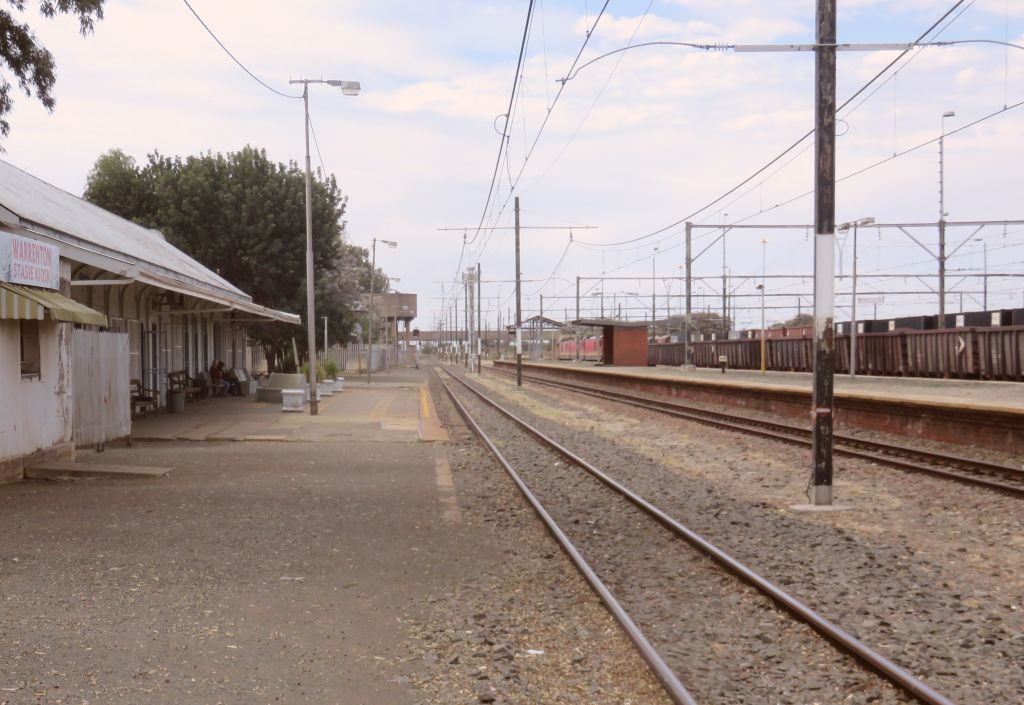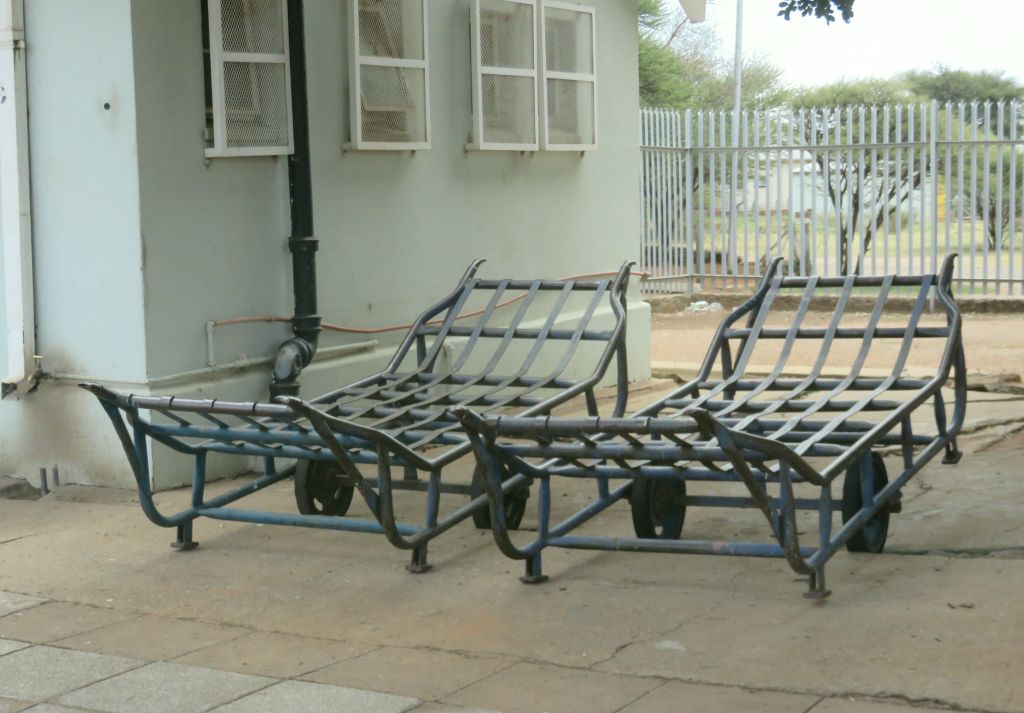
Warrenton
A small town in the Northern Cape on the banks of the Vaal River about 70 km north of Kimberley. Its Geo-position: 28.112°S, 24.849°E and 1186m above sea level.
History
The start was made when in 1880, a syndicate bought the western portion of the farm Grasbult to irrigate the fertile land and produce vegetables for the diamond fields. The town was established in 1884. It was named after after Sir Charles Warren. Diamonds were discovered here in 1888 and mining continued to 1926. It obtained municipal status in 1948.
NG church
 In 1881 Ds.A.P.Kriel from Dutoitspan (Kimberley) visited the area and conducted a service on the farm Doornfontein not far from the village. The opportunity was used by the village committee (Dorpskomittee) to present a petition for the establishment of a congregation. This was accepted by the ring commission and the congregation came into being on the 9-Sept-1882.
In 1881 Ds.A.P.Kriel from Dutoitspan (Kimberley) visited the area and conducted a service on the farm Doornfontein not far from the village. The opportunity was used by the village committee (Dorpskomittee) to present a petition for the establishment of a congregation. This was accepted by the ring commission and the congregation came into being on the 9-Sept-1882.
 There actually had been a bit of an awkward situation. Originally the NG members living in that area had been part of the Boshoff congregation. This changed with the annexation of Griqualand into the Cape Colony. The way the new border was drawn meant that they should now fall under Dutoitspan. This caused some unhappiness and members were given individual choices to which church they want to go to. This problem was overcome by forming their own congregation.
There actually had been a bit of an awkward situation. Originally the NG members living in that area had been part of the Boshoff congregation. This changed with the annexation of Griqualand into the Cape Colony. The way the new border was drawn meant that they should now fall under Dutoitspan. This caused some unhappiness and members were given individual choices to which church they want to go to. This problem was overcome by forming their own congregation.
They immediately started planning to build a church, actually a school church. The building was taken into use in 1885, see picture. It served the congregation for many years until the new, present church was built in 1937.
An interesting piece of information from ref 2. In 1892 a contract was signed between the church council and the village management council to give full rights to to the village council to manage the settlement. That in exchange for a percentage of the income from diamong diggers licenses and from other income. It sounds like that untill then, the church council was also the village council. It is stated that this income helped the church to function and to also help people in need.
Railway station
 The trains reached Warrenton allready in 1890 when the line between Kimberley and Vryburg was opened. This was the beginning of the great north railway, all the way to Bullewayo and further to Victoria Falls in Rhodesia.
The trains reached Warrenton allready in 1890 when the line between Kimberley and Vryburg was opened. This was the beginning of the great north railway, all the way to Bullewayo and further to Victoria Falls in Rhodesia.
 The station increased in importance when the rail from Kleksdorp came through in 1905, connecting the station to Johannesburg. The junction was actually at Vierfontein, a few miles further north.
The station increased in importance when the rail from Kleksdorp came through in 1905, connecting the station to Johannesburg. The junction was actually at Vierfontein, a few miles further north.
With the decline of rail, the station is loosing its importance. But look, what we found on the station platform. Two luggage trollies, still in good condition, looking as if they are still in use, and not stolen yet. I can only assume it has something to do with Rovos Rail, a luxury rail travel company.
References
Ref 1.: Standard Encyclopedia of Southern Africa, Nasou Limited, 1974
Ref 2.: "Ons Kerk Album van Hollandsche Kerken en Leeraren", printed by Cape Times, 1917